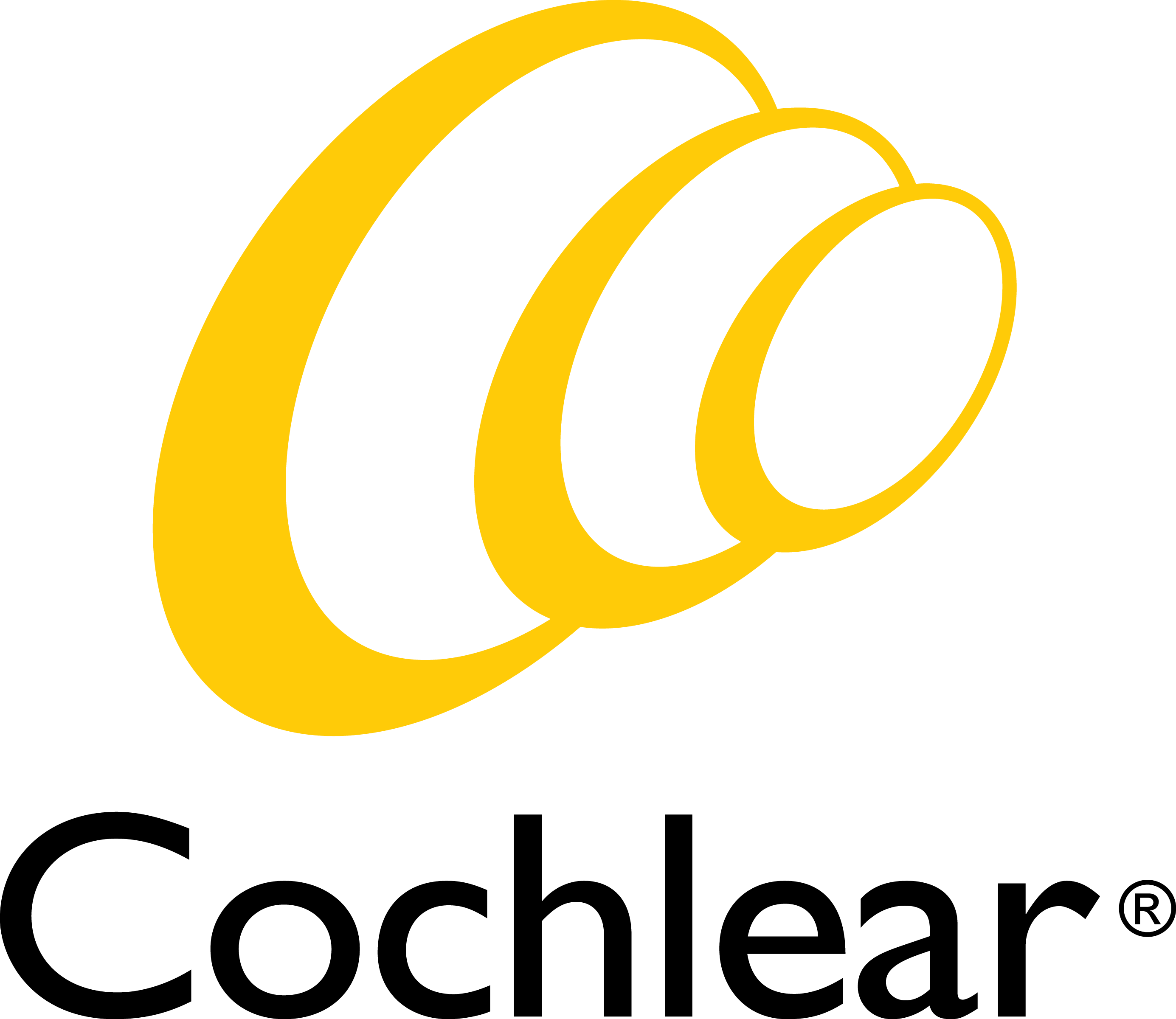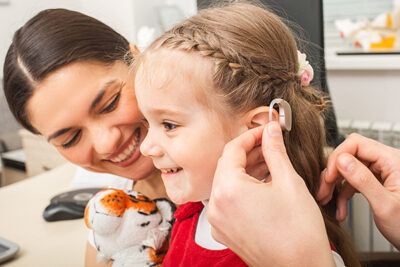Hearing Aids for Children Atlanta, GA
Our Doctors of Audiology and Audiologists offer a complete range of hearing aids for children with hearing loss. Children with hearing loss often benefit from a hearing device. There are different types of hearing devices. Your audiologist may recommend a device based on a variety of factors, including your child’s age; degree, type and severity of hearing loss; and physical factors, such as the shape of your child’s ears. If medicine and/or surgery cannot correct the hearing loss, a hearing device may be an option for your child.
Hearing devices can improve the ability of a child with hearing loss to communicate with friends and family, learn to speak more clearly and understand their teachers at school. The goal is to reduce delays in speech and language development, improve communication and lessen the risk of academic difficulties.
Hearing aids and devices are battery-powered and most are worn on and/or in the ear(s) to help children with hearing loss hear more clearly. They pick up speech and other sounds through tiny built-in microphones, make them louder, and send them into a child’s ears. Hearing Aids for Children in Atlanta, GA, helps to make speech more clear.
Hearing devices are “digital”, which allow audiologists to use computers to tell the digital chip inside of hearing aids how much loudness to add at different frequencies or pitches based on your child’s hearing loss. Think of digital hearing aid “programming” like adjusting the bass or treble controls of your stereo, rather than simply just turning the overall volume up or down.
Some hearing devices are able to connect directly to smartphones and other Bluetooth-enabled devices, which allows your child to easily listen to music, hear the TV and talk on the phone.
Your audiologist will discuss options with you if your child is a candidate for a hearing device.
HEARING AID SERVICES
Hearing Aids for Children in Atlanta, GA, is programmed for patients whose hearing loss is in the mild to severe/profound range. Ear specific thresholds via audiometric testing as well as medical clearance from the ENT are required prior to proceeding with the fitting of amplification.
Hearing Aid Consultation – This appointment type is for patients who are newly diagnosed with hearing loss and would like to pursue amplification or for existing hearing aid users who want to upgrade their technology. This is a 1-hour appointment to confirm hearing thresholds, determine hearing/listening deficits, discuss the type of hearing loss , severity of hearing loss , implications of hearing loss on speech and communication, review hearing aid styles and hearing aid manufacturers. We will also review technology levels and if needed take earmold impressions.
Hearing Aid Fitting – This 1-hour appointment is utilized to program the hearing aid settings to the child’ hearing loss, verify the hearing aid settings and features, and orient the family to the hearing aid. Infants, toddler and young children cannot tell the audiologist if speech is clear, muffled, too loud or too soft. Thus, we rely on evidence based fitting protocols that are customized to the child’s ear canal via probe microphone measurement to verify soft speech is loud enough for the child to hear through the hearing aids and that loud sounds are not too loud/loud enough to cause discomfort.
Hearing Aid Follow-up/Troubleshooting – Hearing aid follow-up appointments are scheduled for established hearing aid patients or patients transitioning from outside facilities who need services for their hearing aids. Routine monitoring of the hearing aids is recommended to ensure maximum benefit. The hearing aid settings may need to be adjusted as the child’s ear grows, the hearing loss progresses or the child’s listening needs evolve. In addition to verify the acoustic functionality of the hearing aid, we also monitor behavioral benefit of the child with their use of amplification through aided audiometric testing.
Manufacturers We Service Hearing Aids For:


BONE CONDUCTION PROCESSOR SERVICES
Bone Conduction or osseointegrated processors are an option for children with conductive hearing loss, mixed hearing loss and single-sided deafness. In cases where the outer ear is absent or not fully formed, chronic ear drainage, or when one ear does not function, a bone conduction processor may be a more effective solution than air conduction hearing aids.
Bone Conduction Device Consultation – This appointment type is for patients who are newly diagnosed with hearing loss and would like to pursue amplification or for existing users who want to upgrade their technology. This is a 1-hour appointment to confirm hearing thresholds, determine hearing/listening deficits, implications of hearing loss on speech and communication, review processor styles and manufacturers. Depending on the patient’s age, we may be able to demonstrate the processor in the office.
Bone Conduction Device Fitting – This 1-hour appointment is utilized to program the processor to the child’ hearing loss, verify the processor settings and features, and orient the family to the processor.
Bone Conduction Device Follow-up/Troubleshooting – Amplification follow-up appointments are scheduled for routine monitoring of the processor to ensure maximum benefit. The processor settings may need to be adjusted as the child’s ear grows, the hearing loss progresses or the child’s listening needs evolve. In addition to verify the acoustic functionality of the processor, we also monitor behavioral benefit of the child with their use of amplification through aided audiometric testing.
Non-Surgical Options:
- Cochlear Americas BAHA on softband
- Cochlear Americas BAHA on sound arc
- Med-El Adhear
- Oticon Medical Ponto on softband
Surgical Options:
- Cochlear Americas BAHA Connect (abutment)
- Cochlear Americas BAHA Attract (magnet)
- Cochlear Americas Osia (magnet)
- Med-El BONEBRIDGE (magnet)
- Oticon Medical Ponto (abutment)
Manufacturers We Service Bone Conduction Hearing Aids For:

Cochlear Implant for Children
COCHLEAR IMPLANT (CI) DEVICE SERVICES
Cochlear implants are devices may be recommended for children with severe to profound hearing loss who do not benefit from digital hearing aids or bone conduction processors. The cochlear implant is a two-part electronic device that provides a means for receiving sound. The cochlear implant works differently than a hearing aid, which amplifies sound in the outer ear, because the cochlear implant bypasses the external and middle ear and delivers sound information directly to the hearing nerve.
Cochlear Implant Evaluation – This appointment type is for patients who are potential cochlear implant candidates. This one hour appointment includes a series of audiometric tests designed to determine candidacy for a cochlear implant as well as counsel the family on the journey of cochlear implantation.
Cochlear Implant Initial Activation – After the child has the internal component surgically implanted, the external cochlear implant processor will be activated or turned on. This appointment is usually two-hours long and scheduled after the cochlear implant surgeon has medically cleared the child for activation. During this appointment, the internal electrode’s functionality is measured, the sound processor is programmed/mapped and the family is oriented to the processor. This appointment will be the first time a cochlear implant recipient will hear with their cochlear implant.
Cochlear Implant Follow-up/Troubleshooting – Follow-up appointments are routinely scheduled for established CI patients or patients transitioning from outside facilities who need programming adjustments or processor troubleshooting. These appointments are also utilized to monitor functional benefit with the implant.
Manufacturers We Service:



